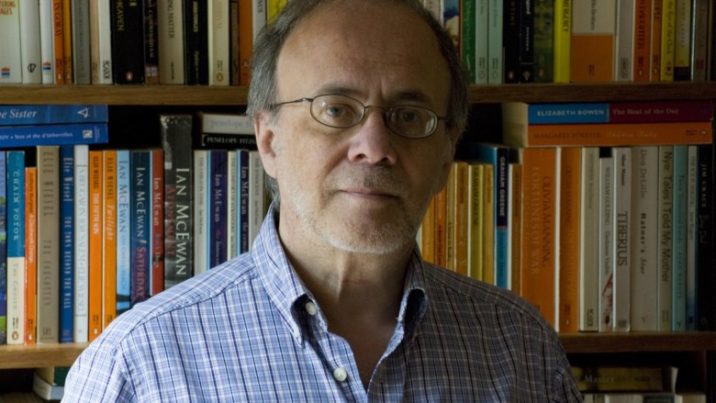By Dr Alan Garrow
Long-term readers may remember how, in December 2017, the LAB covered the story of the $1,000 Challenge to Bart Ehrman. Prof Ehrman was challenged to find an error in Alan Garrow’s solution to the Synoptic Problem – in which Matthew used Luke. Since then, further steps have been covered by the LAB (cf. “Everyone (who cares about early Christianity) has a dog in this fight” and “What happened when Mark Goodacre asked ‘Why not Matthew’s use of Luke?'”).
The scene is now set for a further set of exchanges. SBL San Antonio 2021 sees a three-way in-person debate between supporters of the Matthean Posteriority Hypothesis (Alan Garrow and Robert MacEwen), Farrer Hypothesis (Mark Goodacre), and Two Document Hypothesis (Robyn Walsh). Richard Bauckham’s endorsement has helped establish the Matthean Posteriority Hypothesis as one of the three main solutions to the Synoptic Problem.
Here Richard Bauckham answers the question: “What first made you suspect that Matthew used Luke?“
For most of my career I thought the Q hypothesis was the most convincing explanation of the material common to Matthew and Luke, though with the proviso that maybe Q was not a single source. When comparing parallel passages in these two Gospels in detail, I usually found that redactional changes to a common source by the respective evangelists explained satisfactorily their similarities and differences. What changed my mind about Q was the problem of envisaging what the source as a whole could have been like. Q is often said to have been a sayings collection, but in fact the Q material begins with a substantial amount of narrative and then seems to abandon narrative form in favour of sayings alone, sometimes with a brief narrative setting but often not. As a piece of literature, this is incoherent. I doubt if this problem can be solved by dividing Q into more than one source, though I would be open to a sustained argument along those lines if anyone were to develop one.
But the impression one gets from virtually all studies of the Synoptic problem is that the only viable alternative to Q is the Farrer hypothesis (Luke’s use of Matthew). I have never found that hypothesis credible. The major problem I see is the way that Luke would have had to rearrange the material he shares with Matthew. The common objection along these lines has been: Why would Luke break up Matthew’s well structured and coherent discourses and scatter the material around his Gospel? Advocates of the Farrer hypothesis have devoted their defences to answering that question. But my problem is with the how, not the why. The process by which Luke would have had to select and arrange the material he takes from Matthew (which would have involved very carefully avoiding any Markan material in the context of this Matthean material) would have been extremely complex. Alan Garrow has shown this very convincingly, and it can only be appreciated by people who are willing to sit down with a synopsis and examine the parallel texts in detail. Francis Watson in his book Gospel Writing has now made the best available attempt to explain and account for Luke’s compositional procedure. I doubt if anyone could do better, but I ended reading it with the conclusion: This is unbelievably complex. It is also completely unparalleled in the way that other ancient authors worked with their sources.
So I hung onto Q for longer than I would otherwise have done because I still found it more credible than Luke’s use of Matthew. But occasionally the question occurred to me: why has hardly anyone even attempted to explore the possibility that Matthew used Luke? It seemed like a solution that had never been tried, rather than one that been tried and found wanting (as one might say of the Griesbach hypothesis). I discovered that it had been proposed (by Christian Gottlob Wilke), back in the nineteenth century just when the Q hypothesis originated and became popular. At that stage most scholars adopted the latter, and the “Wilke hypothesis” (as we might have called it had anyone pursued it then) was forgotten. When eventually an alternative to Q again appeared on the scholarly horizon, it was the Farrer hypothesis.
To me Matthew’s use of Luke had the obvious advantage of avoiding what I found incredible in the Farrer hypothesis. Though Matthew’s compositional procedures, if he took the “Q” material from Luke, would involve often conflating Luke with Mark (in the way that advocates of Q envisage him conflating Q with Mark), his procedures would be much less complex and difficult than those of Luke according to the Farrer hypothesis. A further consideration is that Q scholars, when judging whether Matthew or Luke preserved the more “primitive” form of a saying of Jesus, tend in a large majority of cases to decide for Luke.
While the criteria for making these judgments are often not very secure, the overall impression that Luke has the earlier form of sayings he shares with Matthew should surely make it worth considering the hypothesis that Matthew took the “double tradition” material from Luke, rather than vice versa. (Since B. H. Streeter, the case for Q has standardly included the “alternating primitivity” of the “double tradition” material. In other words, sometimes Matthew, sometimes Luke preserves the more primitive form. This assertion seems to have obscured the fact that actually most scholars working with the Q hypothesis judge Luke to be more primitive far more often than they judge Matthew to be.)
These considerations mean that, if one begins from the position of thinking that the Q hypothesis works rather well in many respects, as I do, but find it in the end unsatisfactory, as I do, then the more obvious of the other two principal possibilities must be Matthew’s use of Luke, not Luke’s use of Matthew. Many of the really good arguments for Q can also support Matthew’s use of Luke.
Encouraged by the work of Robert MacEwen and Alan Garrow, who have devoted far more time and effort to exploring the “Matthean Posteriority” hypothesis (as MacEwen calls it) than I can spare, I decided I had sufficient reason to adopt it as a working hypothesis. The reason I am 99% convinced of Markan priority is that I have worked with it as a plausible hypothesis throughout my career and have always found it made good sense of the data. I have now made a start to working with Matthew’s use of Luke as a working hypothesis and so far it seems to me to doing well.
The main reason the Synoptic Problem is difficult is that it involves working on both macro- and micro-levels. In other words, a hypothesis must give a plausible account of what an evangelist is doing with his sources overall and why he should be doing it, but it must also meet the test of explaining the precise similarities and differences between the parallel texts of each Gospel in each pericope. Probably this is a reason why so few people have so far taken “the road less travelled” – Matthew’s use of Luke.
This article was first publishing on Alan Garrow’s Blog here. Alan Garrow is Vicar of St Peter’s Harrogate and a member of SIIBS at the University of Sheffield.





